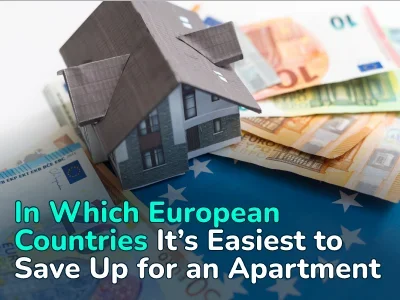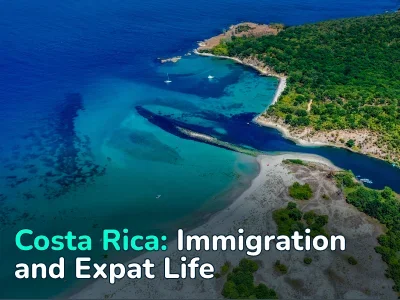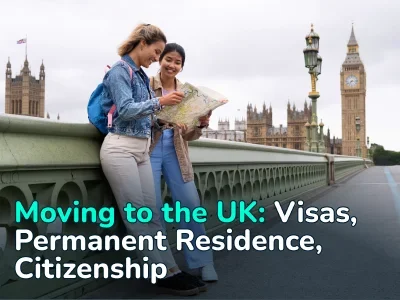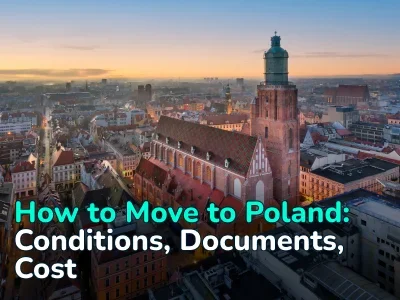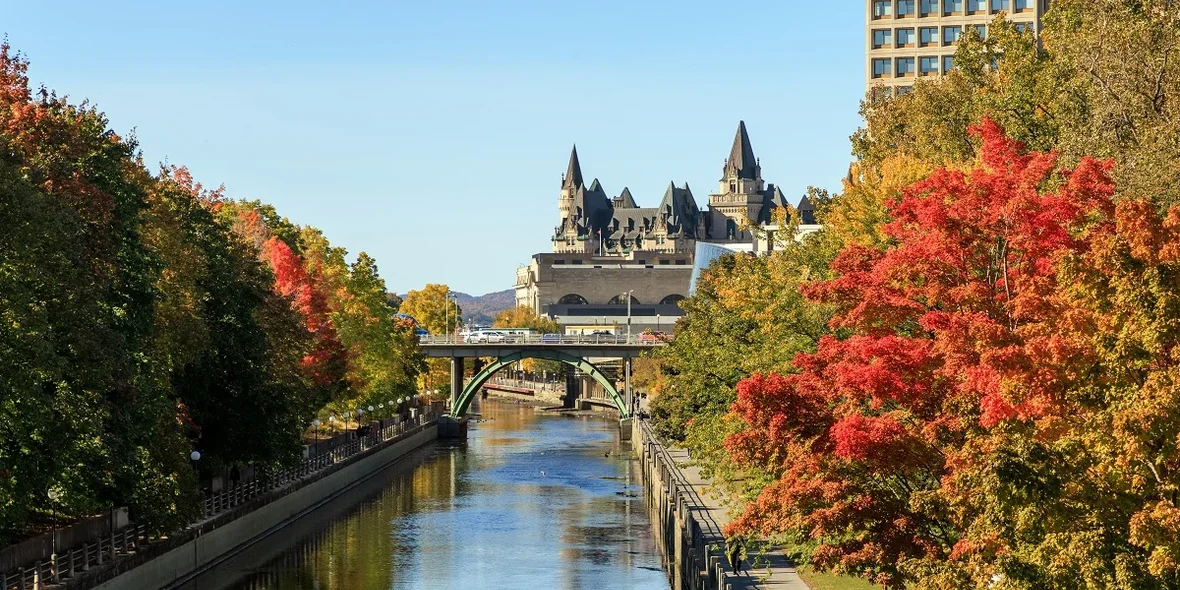
Сanada Temporary Residence Permit
Canada offers foreign nationals the opportunity to become residents of the country. This status grants the right to live and work in Canada for either a fixed or permanent period. There are two main ways to obtain this status.
The first way is through Permanent Residency, which allows foreigners to live and work in Canada on a permanent basis. Permanent residents enjoy most of the rights that citizens do, except for the right to vote and hold certain government positions.
The second way is through Temporary Residence, which is issued in the form of a Temporary Resident Visa (TRV). Temporary residence is intended for individuals who plan to visit Canada for a limited time with a specific purpose (such as tourism, study, or work).
For those who cannot obtain a TRV, there is a Canada Temporary Residence Permit (TRP). A TRP is issued in cases where the applicant does not meet the requirements for a TRV due to legal, medical, or other reasons that make them inadmissible to Canada, but they have valid reasons for staying in the country.
In this article, we will discuss how to get a residence permit in Canada, what needs to be done to extend it, and whether it is possible to obtain permanent residency directly.
Canadian Residence Permit Benefits
Canada offers numerous opportunities for those who manage to obtain resident status, the most significant of which is the ability to live and work in Canada legally. However, obtaining residency is not easy, and refusals are common for various reasons.
Pros:
- Education. Permanent residents have access to Canada’s education system, including public schools and universities, where they can benefit from substantial tuition discounts compared to international students.
- Healthcare. While Canada often ranks lower among developed countries in terms of healthcare quality, it consistently holds a place in the global top 30.
- Social programs. Canada permit residence provides access to various social programs, such as unemployment benefits, maternity and child benefits, and pensions. Although Canada’s social programs may not be as comprehensive as those in Europe, they are more accessible and extensive within the North American region, especially in terms of supporting the families and relatives of Canadian residents.
- Pathway to citizenship. After a certain period of residency in Canada (usually between 3 to 5 years), residents can apply for Canadian permanent residency, which paves the way to citizenship.
Cons:
- Mandatory residence period. Permanent residents must comply with the minimum residency requirement in Canada (typically 730 days within five years).
- Taxation. Canadian residents are required to pay taxes on their global income, including income earned abroad.
- Maintaining resident status. Retaining residency status requires regular document renewal and meeting specific conditions, including residency obligations.
- Risk of rejection. Residency applications can be denied for various reasons, such as a criminal record, violations of immigration laws, medical issues, or insufficient financial resources to support oneself in Canada.
An immigration officer has the authority to reject an application even if the applicant meets all the requirements. Conversely, there are cases where an officer may approve residency for a candidate who does not fully meet the criteria. The primary reasons for refusals include failing to meet the requirements of the chosen program, providing false or incomplete information, and issues related to security (criminal record), health, or the applicant’s financial situation. These reasons are well-known and detailed on the official website of Immigration, Refugees, and Citizenship Canada (IRCC). However, there are also less obvious grounds for refusal that applicants may encounter:
- Undisclosed financial obligations. Applicants may be denied if they fail to disclose significant debts or other financial obligations that could negatively impact their financial stability in Canada. Even small debts can be seen as a risk factor, indicating difficulties in managing finances.
- Issues with dependent family members. If a family member of the applicant (such as a spouse or child) does not meet health or security requirements, it can result in the denial of the entire application, even if the primary applicant meets all criteria. This can occur if authorities believe that the dependent would place a significant burden on Canadian social services.
- Unusual or unforeseen circumstances. In some cases, rejection may be due to unique or rare circumstances, such as an unusual migration pattern, the use of unconventional documents, or even suspicious behavior during an interview. For example, frequent changes in the applicant’s address or employment without a clear reason may raise concerns for the immigration officer.
- Incompatibility with social norms and values. In rare cases, an applicant may be denied if they exhibit behavior or hold views that conflict with fundamental Canadian values, such as respect for human rights, gender equality, or religious tolerance.
Canadian Residence Permit Requirements and Documents
To obtain residency in Canada, the applicant must first have a valid passport or an equivalent document for each family member included in the application. Colored photographs must meet the requirements specified on the official website of Canada’s immigration services. Additionally, Canadian residence permit requirements include:
- A police clearance certificate from every country where the applicant has lived for more than six months after the age of 18.
- A medical examination report issued by a panel physician accredited by the Canadian immigration authorities.
- Bank statements, property ownership documents, and letters from employers or sponsors that confirm the availability of funds for the duration of the stay in Canada.
Specifically for a Temporary Residence Permit in Canada (TRP), the following forms and documents are also required:
- Form IMM 5708: application to Change Conditions, Extend My Stay, or Remain in Canada as a Visitor or Temporary Resident.
- Form IMM 1283: financial Evaluation for Spousal Sponsorship, if applicable.
- Documents proving legal status in Canada and the reason why the applicant requires a TRP. It is essential that the applicant provides sufficient evidence of their legal stay in Canada at the time of application. If the applicant is in the country illegally, this can significantly complicate the process of obtaining a TRP.
Since the issuance of a TRP is a discretionary process, the immigration officer may request additional documents, such as letters from employers or educational institutions, or other documents demonstrating ties to Canada or the specific reasons why the applicant cannot obtain a standard visa.
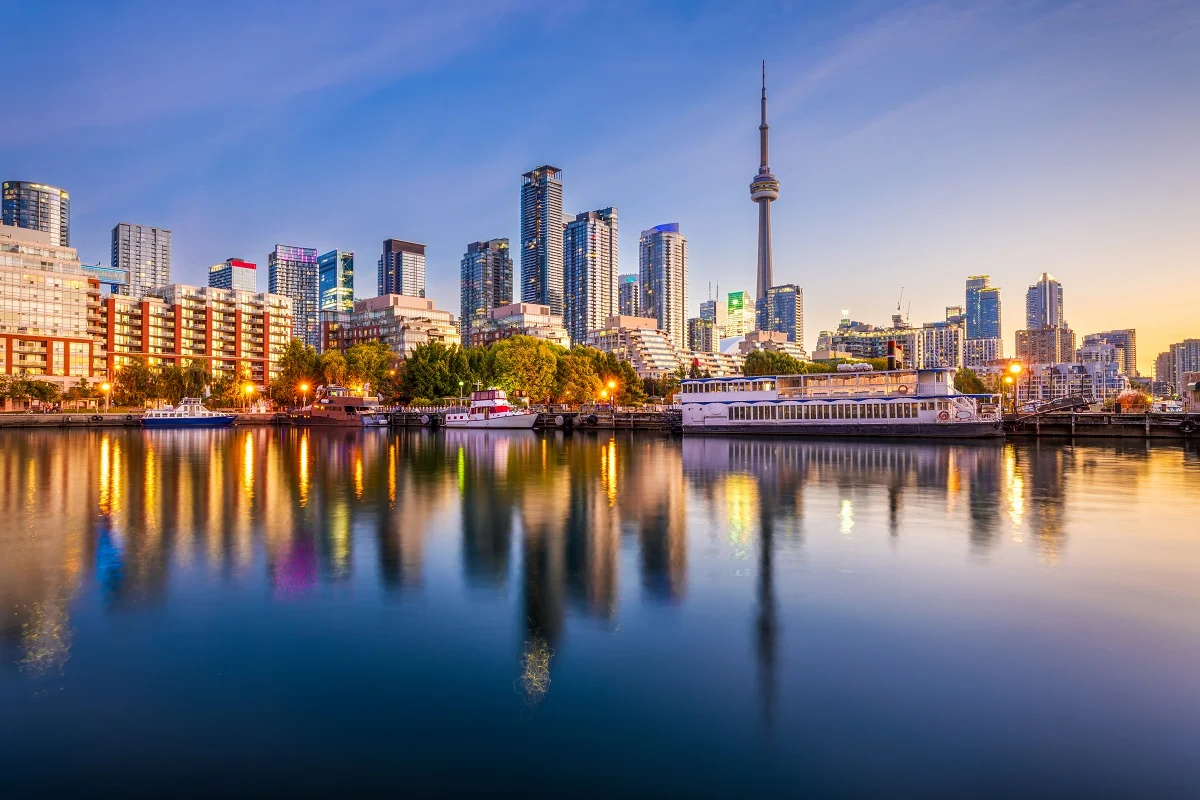
How to Get a Temporary Residence Permit in Canada
Like many countries around the world, Canada faces a significant shortage of labor across all skill levels. As a result, the country offers a wide range of immigration programs not only for applicants, but also for their close family members and relatives.
In addition to workers, Canada is keen on attracting international students with the aim of eventually integrating them into the Canadian workforce. This is particularly evident in the measures taken to grant residency to the relatives of students in Canada.
For investors, the country is less welcoming, as it is not possible to obtain Canadian residency by purchasing real estate. This is largely due to past instances where real estate transactions were subject to speculation and fraud.
Temporary Resident Visa for Students
A Temporary Resident Visa (TRV Canada) is an entry visa required for foreign nationals from specific countries who wish to enter Canada. For international students, a TRV is often issued alongside their study permit.
Study Permit allows international students to legally reside and pursue their education. This permit serves as a popular pathway not only to gain a Canadian education, but also to potentially obtain a work visa, following the completion of studies. The process begins with securing an acceptance letter from a designated Canadian educational institution, known as a Designated Learning Institution (DLI). This letter is the foundation for obtaining legal status in Canada.
After completing their education, students may have the opportunity to apply for a Post-Graduation Work Permit (PGWP), enabling them to remain in Canada and work for up to three years, depending on the length of their study program. The work experience gained through a PGWP can later facilitate the transition to permanent residency through programs such as Express Entry.
Study permit and temporary resident visa for students in Canada can be applied for directly or through the Student Direct Stream (SDS). This program aims to simplify and speed up the visa application process for students who meet certain additional requirements, such as applicant-specific counties, allowing them to receive their study permit faster than through the regular process.
List of specific countries for the SDS Program:
- Antigua and Barbuda
- Brazil
- China
- Colombia
- Costa Rica
- India
- Morocco
- Pakistan
- Peru
- Philippines
- Senegal
- Saint Vincent and the Grenadines
- Trinidad and Tobago
- Vietnam
To apply for a study permit and a TRV directly, applicants must provide the following documents:
- Letter of acceptance. Official confirmation from a DLI-registered institution.
- Proof of financial sufficiency. Bank statements, scholarships, tuition payment confirmations, sponsorship letters, and other documents proving applicants have sufficient funds for their education and living expenses.
- Housing documentation (if applicable). A rental agreement or a letter from the host.
- Language test results (if required). For programs that require proof of language proficiency.
- Letter of explanation. Some applicants provide a letter explaining the purpose of their studies and future plans.
- Health insurance. In some Canadian provinces, health insurance is required for the duration of your studies.
Temporary Foreign Worker Program (TFWP)
The Temporary Foreign Worker Program in Canada (TFWP) allows foreign nationals to legally work and reside in the country. This program is primarily designed to address the needs of Canadian employers who require skilled workers to fill labor shortages. A work permit under the TFWP can be obtained based on a job offer from a Canadian employer through specific provincial nomination programs, or by receiving approval through the Express Entry system.
Most labor migration under the TFWP occurs through the Express Entry system, which includes three main streams:
- Federal Skilled Worker Program (FSWP): targets skilled workers with foreign work experience.
- Federal Skilled Trades Program (FSTP): focuses on trade professionals with foreign work experience.
- Canadian Experience Class (CEC): designed for workers with Canadian work experience.
Provincial Nominee Programs (PNP) are another key component of the TFWP, allowing specific Canadian provinces and territories to nominate individuals for work permits based on the local labor market needs. Examples include the Ontario Immigrant Nominee Program (OINP) and the Atlantic Immigration Program (AIP).
There are two main types of work permits under the TFWP:
- Open work permit. Allows employment with any Canadian employer, except those involved in specific restricted industries. This permit is typically issued in limited cases, such as:
- The applicant has recent work experience obtained in Canada, specifically in key occupations listed on the official website.
- The applicant is a Francophone worker with recent Canadian work experience in key occupations listed on the official website.
- Recent international graduates from Canadian institutions.
- Francophone international graduates from Canadian institutions.
- Recent international graduates from Canadian institutions applying for a permit beyond the established quotas.
- Applicants to the program for transitioning from temporary residency to permanent residency under a temporary alternative format.
- Employer-specific work permit. Ties the worker to a specific employer and location. This is the more common type of permit under the TFWP, as most immigration programs in Canada are designed to meet the needs of local employers and communities by providing them with a platform to find skilled workers. In return, the candidate is required to work for the employer who facilitated the work permit, ensuring the employer is protected from workers who might seek to change jobs after receiving their permit.
Super Visa
The Super Visa was created to facilitate family reunification in Canada. It allows parents and grandparents of Canadian citizens or permanent residents to visit the country for extended periods. The duration of stay under this visa is significantly longer than standard temporary visas. The Super Visa is valid for up to ten years and permits multiple entries into the country. The continuous stay in Canada for each entry is limited to five years.
An application can be submitted for one parent or grandparent, as well as for both spouses. However, it is important to note that the Super Visa does not extend to other relatives, such as siblings or children who are not Canadian citizens.
Main requirements:
- Financial support. The sponsor, who must be a Canadian citizen or permanent resident, is required to demonstrate a sufficient level of income to support the parents or grandparents during their stay in Canada. This proof must be documented specifically through the submission of tax returns (Notice of Assessment, T4/T1) and other financial documents that confirm compliance with the minimum income requirements, known as the Low Income Cut-Off (LICO).
- Medical insurance. The applicant must provide evidence of having medical insurance from a Canadian insurance company that is valid for at least one year. This insurance must cover expenses of no less than 100,000 Canadian dollars (approximately $72,400 USD) and must be valid for the entire duration of the applicant’s stay in Canada.
- Medical examination. Applicants are required to undergo a medical examination conducted by a physician accredited by the Canadian government. The results of the examination must confirm the absence of any conditions that would pose a risk to public health in Canada.
- Invitation letter. The Canadian relative must provide an official invitation letter, detailing their commitment to financial support and accommodation for the applicant during their visit to Canada. The letter should include detailed information about the applicant and describe the living arrangements.
To apply for a Super Visa, the applicant must provide the following set of documents:
- Completed visa application form (Form IMM 5257).
- Documents proving the family relationship (birth certificates, marriage certificates, etc.).
- Invitation letter from the Canadian relative.
- Proof of the sponsor’s financial sufficiency, including tax returns, bank statements, and property ownership documents.
- Evidence of medical insurance.
- Results of the medical examination.
- Applicant’s passport and photographs that meet the requirements.
- Receipt for payment of the consular fee.
Refugee Program
Canada offers protection to individuals facing a genuine threat of persecution or violence in their home countries through its Humanitarian Immigration Programs (Refugees Program). Refugee status can be granted to those who are persecuted in their home country based on race, religion, nationality, political opinion, or membership in a particular social group.
Additionally, the program extends to those who cannot return to their country due to a threat to their life or a serious risk of severe mistreatment or punishment. Upon successfully obtaining refugee status in Canada, individuals are granted the right to permanent residency.
The streams under the humanitarian refugee assistance program include:
- Resettlement program: this program is designed for individuals outside Canada who need protection and cannot remain in their home country or country of first asylum. Resettlement is conducted upon the recommendation of the United Nations High Commissioner for Refugees (UNHCR) or through private sponsorship programs.
- In-Canada asylum program: individuals already in Canada can apply for refugee status. Applications are reviewed by the Immigration and Refugee Board of Canada (IRB).
- Blended Visa Office-Referred Program (BVOR): a combined program where support is provided by both the Canadian government and private sponsors.
Business Immigration and Investments
A residence permit for business immigrants allows entrepreneurs and investors to legally live and conduct business in Canada. Typically, this status is granted based on a work visa or permit, which allows businesspeople to start or acquire a business in Canada with the potential to transition to permanent residency (PR).
The primary program for business immigration is the Start-Up Visa Program. It is designed for entrepreneurs with innovative business ideas who can receive support from Canadian business incubators, venture capital funds, or angel investor groups. Initially, a work visa is issued, granting temporary resident status while the entrepreneur develops their business in Canada.
An alternative option is the Provincial Nominee Programs (PNP). Provincial programs, such as BC PNP, OINP, and others, offer Canada temporary resident status based on work visas for business people intending to operate a business in a specific province. These programs typically require upfront investments and the successful execution of a business plan.
For most business immigration programs, obtaining a work visa is the first step. For example, under the Start-Up Visa Program, or PNP, an entrepreneur must obtain a temporary work permit, allowing them to stay and work in Canada. After successfully running the business for a certain period (usually 12 months or more), the entrepreneur can apply for permanent residency (PR).
Regarding residence by investment, the Quebec Immigrant Investor Program (QIIP) is the only program in Canada that allows immigration through investment. This program requires a significant net worth ($2 million) and a willingness to invest at least half of this amount in the country’s economy. Unlike other programs, QIIP allows direct access to PR without the need to obtain a visa and temporary resident status first.
Previously, there was an opportunity to obtain residency in Canada through investment under the Provincial Nominee Program of Prince Edward Island. However, it was closed due to frequent cases of fraud by candidates seeking Canadian residency through real estate purchases.

Applying for a Canadian Temporary Resident Permit
The first step is choosing the program that best suits the applicant. Canadian visa programs can be broadly categorized, with the most popular among labor migrants being the Temporary Foreign Worker Program, International Mobility Program, and others.
An important aspect of most work programs is having a job offer from a local employer. However, since Canada has a high demand for skilled labor, this usually isn’t a significant challenge.
The next most popular option is immigration to Canada through education. This allows international students enrolled in Canadian educational institutions to obtain temporary resident status.
Other options include granting temporary resident status to relatives of individuals who already hold residency in Canada or any other legal status, as well as to those in need of protection (refugees).
After selecting a program, the necessary documents must be gathered:
- Passport. The passport must be valid for at least the expected duration of stay in Canada.
- Proof of financial stability. Bank statements, tax returns, and income documents that demonstrate the applicant’s financial self-sufficiency while in Canada.
- Letter of acceptance (for study visa). An acceptance letter from a Canadian educational institution confirming the applicant’s student status.
- Job offer (for work visa). The Canadian employer must provide an official job offer and, in some cases, a confirmation from LMIA (Labour Market Impact Assessment).
- Proof of family ties (for family or super visa).
- Medical insurance. A policy covering the entire stay in Canada.
- Police clearance certificates. Proof of no criminal record in countries where the applicant has lived for six months or more.
Steps for submitting an application:
- Applying for temporary resident status in Canada. This can be done online through the Immigration, Refugees, and Citizenship Canada (IRCC) portal or via a Canadian consulate/visa application center in the applicant’s country of residence. The process for creating an online application is as follows:
- Creating an IRCC account. Register in the online system on the IRCC website and create an account to track the status of the application.
- Filling out forms. Temporary resident permit canada forms include specific ones according to a visa type. For example, for a work visa, it might be form IMM 1295 (Application for Work Permit), and for a study visa, form IMM 1294 (Application for Study Permit). All forms must be completed in English or French.
- Uploading documents. All documents must be uploaded electronically to the personal account.
- Paying fees. After completing the forms and uploading the documents, the consular fee must be paid, with the amount depending on the type of visa.
- Biometrics. After submitting the application, you will receive a notification about the need to provide biometrics. The notification will include information on where and when this can be done. An appointment can be scheduled through the IRCC personal account or visa center. The procedure includes fingerprinting and a digital photograph. This data will be used to verify the applicant’s identity upon entry to Canada.
- Waiting for a decision. During the review process, the immigration service may request additional documents or information. Requests will be sent to the applicant’s email, and notifications will appear in the IRCC personal account.
- Receiving a decision. If the application is approved, the applicant will receive a notification of the visa and temporary resident permit (TRP) issuance. This document allows legal entry and stay in Canada.
- Upon arrival in Canada, the applicant presents documents confirming their status and undergoes an interview with an immigration officer. The officer verifies whether all conditions for obtaining temporary resident status in Canada have been met and makes a final decision on the visa issuance and its duration.
Canadian Residence Permit Extension
The main recommendation when extending a Temporary Resident Permit (TRP) is to prepare for the process in advance. It is advisable to submit the application for a temporary resident visa extension in Canada at least 30 days before its expiration. This buffer period helps protect against potential bureaucratic delays related to document collection.
Depending on the type of TRP (e.g., student visa, work visa), you will need to gather the appropriate documents:
- Valid passport;
- Current TRP;
- Proof of financial stability;
- Proof of the reason for the extension (e.g., continuation of studies or extension of a work contract).
The application for TRP extension can be submitted online through the Immigration, Refugees, and Citizenship Canada (IRCC) portal or via a visa application center. At this stage, processing fees must be paid.
Processing the application might take longer than the 30-day buffer. However, in such cases, the applicant does not lose their legal status in the country but is granted “implied status.” This status is valid during the application processing period and remains in effect even if the application is denied, allowing time to leave the country or obtain another permit.
Transition from TRP to PR
The main benefit of a Canada Temporary Resident Permit (TRP) is the ability to apply for permanent residency (PR). This procedure is typically possible after at least three years (sometimes two) of living in Canada with a TRP. The exact duration depends on the type and program under which the applicant plans to obtain PR.
Key requirements:
- Stable income and employment. It is essential to demonstrate stable income and employment in Canada, especially for those residing in Canada on a work visa.
- Language proficiency. Applicants must show sufficient proficiency in English or French, typically with a minimum score of four on the IELTS or CELPIP tests.
- No violations. The applicant must comply with all TRP conditions throughout their stay in Canada. Any violations could result in a denial of PR.
After successfully obtaining PR, the applicant gains full eligibility to apply for Canadian citizenship. However, the requirements are more stringent, with a minimum score of seven on the same language tests. Additionally, the applicant must have lived in Canada for at least 3 out of the last 5 years (1095 days) as a permanent resident and pass the citizenship test.
Frequently Asked Questions
What is a residence permit in Canada?
What is a temporary residence in Canada?
What is the processing time for a TRP application in Canada?
What are the fees for applying for a TRP?
How does a Temporary Resident Permit differ from a Visitor Visa?
Author
I write informative articles about real estate, investments, job opportunities, taxes, etc.












